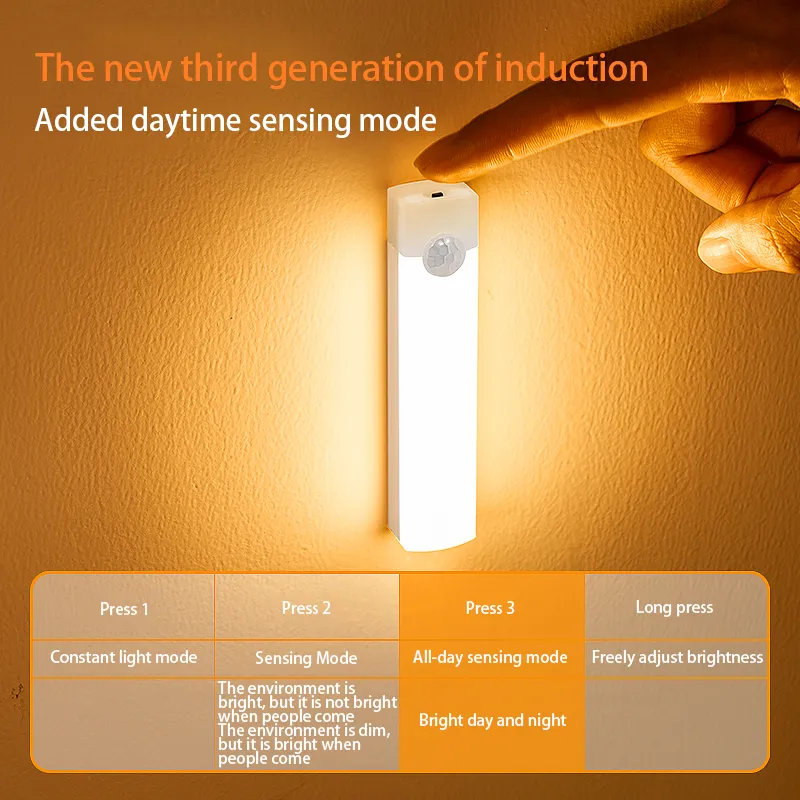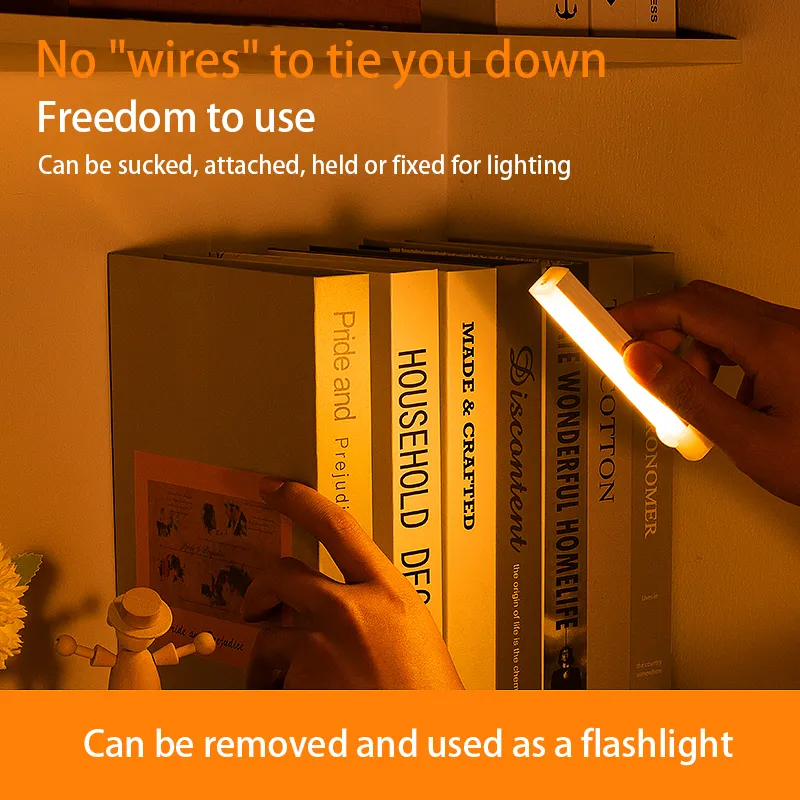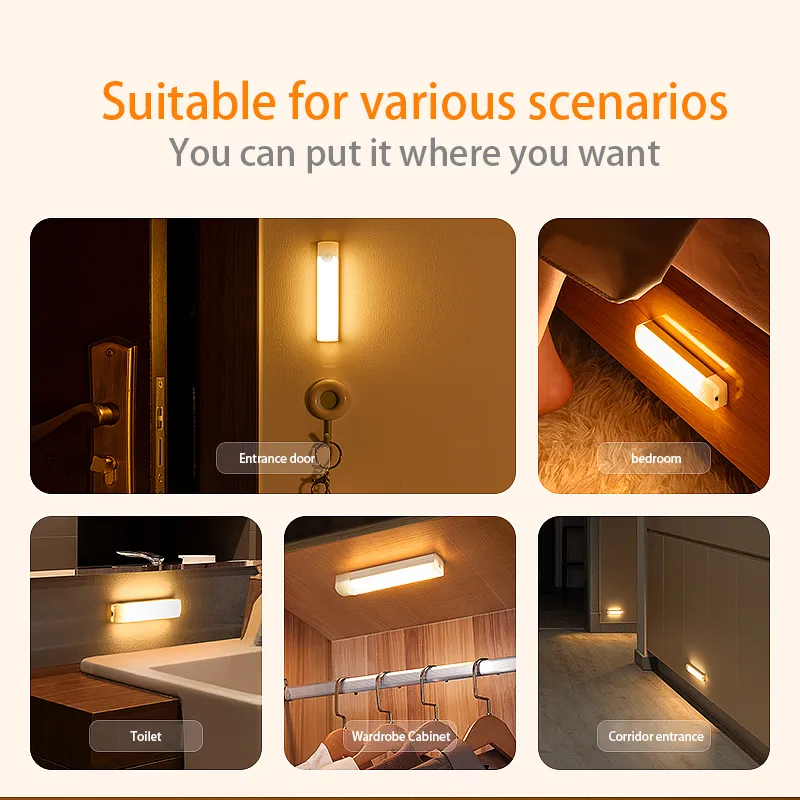How to make a led motion sensor night light?
In daily life, the led motion sensor night light has become an ideal lighting choice for homes, corridors, bathrooms, bedrooms and other low-light environments due to its intelligent sensing, energy-saving and environmental protection, and comfortable night lighting. Compared with traditional night lights, the led motion sensor night light can automatically switch on and off according to human activities, avoiding manual operation, improving convenience, and automatically shutting off when no one is around to reduce power consumption.
So, if we want to make a led motion sensor night light ourselves, how should we do it? This article will explain in detail the working principle, required materials, production steps and testing methods of the led motion sensor night light to help you create a practical smart night light.

Working principle of led motion sensor night light
To make a led motion sensor night light, you first need to understand its core working principle. Its basic components include:
● LED light source: provides lighting, low power consumption and long life.
● Motion sensor (PIR sensor or microwave sensor): used to detect human activities and trigger the LED light to light up.
● Control circuit: connects the sensor and the LED light to determine the switch state of the light.
● Power module: provides power, usually powered by batteries or USB.
When the led motion sensor night light detects human activity (such as approaching the lamp), the motion sensor will send a signal to the control circuit to light up the LED light; if no activity is detected within the set time, the control circuit will turn off the LED light to save energy.

Materials required to make a led motion sensor night light
Before DIYing a led motion sensor night light, you need to prepare the following materials:
1. Electronic components
● LED lamp beads or LED light strips (warm white or cold white LED lights are recommended).
● PIR (passive infrared) motion sensor or microwave motion sensor (optional).
● Power module (commonly powered by 5V USB or 18650 lithium battery).
● MOSFET or transistor switch (used to control the switch of LED lights).
● Basic electronic components such as resistors, capacitors, inductors (used to stabilize the circuit).
● Circuit board or breadboard (used for soldering or testing circuits).
2. Tools and auxiliary materials
● Solder and welding tools (such as electric soldering iron, solder wire).
● Multi-purpose screwdriver.
● Heat shrink tubing and insulation tape (for protecting wires).
● 3D printing or woodworking tools (for making lamp housing, optional).
● Hot melt glue gun (for fixing components).
Steps to make led motion sensor night light
Step 1: Design circuit schematic
First, you need to draw a circuit diagram of led motion sensor night light to ensure that all components are connected correctly. The basic principle of the circuit is as follows:
● PIR motion sensor is connected to MOSFET or transistor. When the sensor detects motion, the MOSFET is turned on to turn on the LED light.
● The power module powers the entire system, usually a 5V DC power supply.
● Delay light off module (some sensors have a delay function) to ensure that the light does not go off immediately after people leave.
Step 2: Build and test the circuit
Build the circuit on the breadboard, including:
● Connect the PIR sensor to the input terminal.
● Connect the LED light to the MOSFET or relay switch.
● Connect the power module to ensure stable power supply.
● Perform a preliminary test to see if the LED motion sensor night light can correctly sense human activity and light up.
● If the circuit works properly, you can solder and fix the circuit.
Step 3: Install LED lights and sensors
● Choose a suitable location to fix the LED lamp beads or LED light strips to ensure uniform lighting.
● Install the motion sensor at a suitable angle to ensure the best sensing range (usually 120° angle).
● Use hot melt glue or brackets to fix all components to prevent looseness or short circuit.
Step 4: Make the shell
● Select the material (such as 3D printed shell, wooden shell or plastic shell).
● Ensure good light transmittance and will not block the LED light.
● Reserve the sensor opening to avoid signal blocking.
Step 5: Debugging and optimization
● Adjust the sensing sensitivity (some PIR sensors can adjust the sensing distance).
● Adjust the light brightness to prevent it from being too bright or too dark.
● Test the night effect to ensure that the LED light can be correctly triggered to light up in a dark environment.

Optimization and precautions of led motion sensor night light
After completing the led motion sensor night light, further optimization can be performed to improve performance and durability.
1. Optimize power management
● If powered by battery, it is recommended to add a lithium battery management module (such as TP4056) to support charging.
● Use low-power LED lamp beads to reduce energy consumption and extend battery life.
2. Add smart functions
● Add a photosensitive sensor to make the night light work only in a dark environment to further save energy.
● Add a delayed extinguishing function, such as a 2-5 second delay, to avoid frequent switching of the light in a short period of time.
3. Choose the right sensor
● PIR sensors are suitable for open spaces, but are not easy to penetrate obstacles.
● Microwave sensors are suitable for more complex environments and can penetrate glass and thin walls, but may be interfered by metal.
Feasibility and practicality of making led motion sensor night light
Homemade led motion sensor night light can not only save costs, but also be customized according to personal needs. You only need to prepare LED lights, PIR motion sensors, control circuits and power supplies to build a practical smart night light.
The production steps are summarized as follows:
● Design the circuit schematic to ensure that all components are connected correctly.
● Build the circuit and test it, and use a breadboard for preliminary testing.
● Install LED lights and sensors to ensure the best sensing range.
● Make the shell to improve the aesthetics and durability.
● Debug and optimize, adjust the sensitivity, add photosensors, and improve energy saving.
Finally, after reasonable design and debugging, an efficient LED motion sensor night light can be put into use, which improves the intelligence level of night lighting, reduces energy consumption, and achieves green lighting.

Huari Lighting Co., Ltd. has been a trusted LED lighting manufacturer since its establishment in 1996. With a large 92,000-square-meter factory in China, we produce over 1 million LED products every month, including led motion sensor night lights, ceiling lights, and energy-efficient LED bulbs such as GU10 and PAR models. Our products are certified by ISO 9001 and ISO 14001, ensuring top-tier quality control across all manufacturing processes. All our products meet international standards, including CE, RoHS, and ERP certifications. Huari Lighting offers businesses competitive pricing, customized solutions, and attractive wholesale deals.
